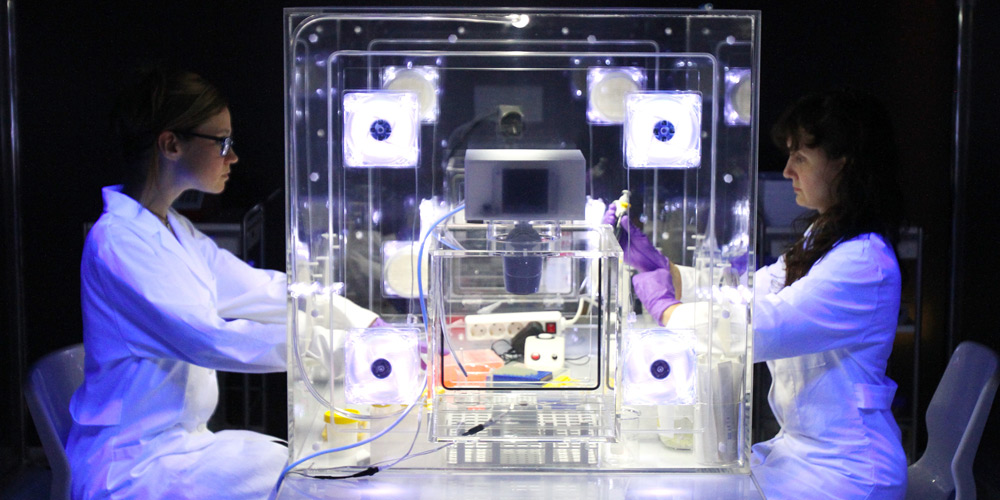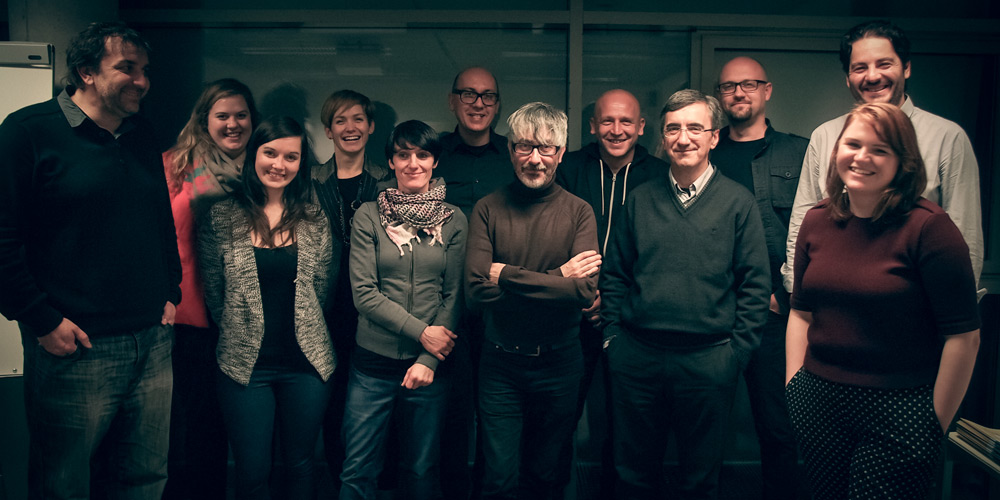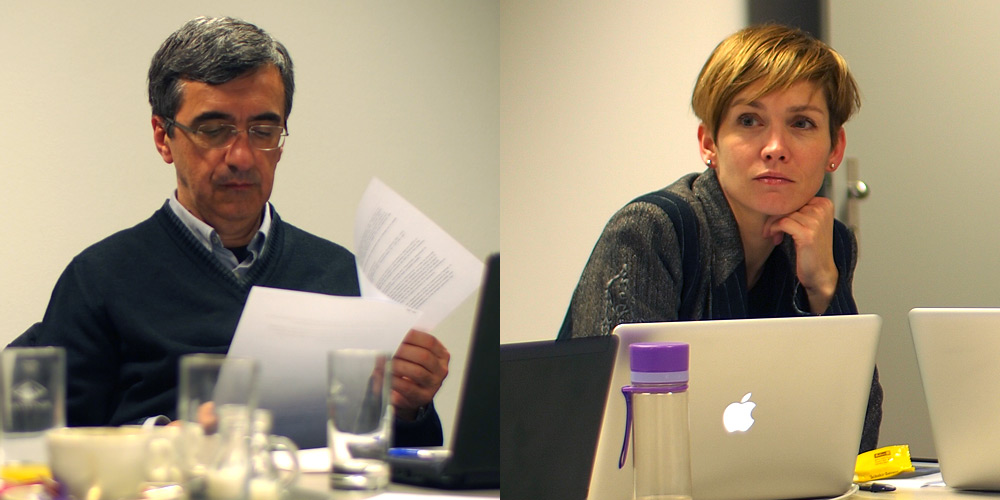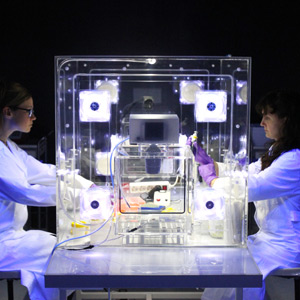
Maja Smrekar (with collaborator Špela Petrič): “MaSm Metatransformation”, Photo: Miha Fras / Kapelica Gallery archive
Only a few days are left until the last chance of a residency at the ESO in Chile and the Ars Electronica Futurelab in Linz. February 9, 2015, is the deadline for submissions to “art & science”, a network that consists of several European partner instutions. Sandra Sajovic, programme manager of Kapelica Gallery, and José Carlos Arnal, managing director of the Zaragoza City of Knowledge Foundation, talk about their expectations of this cooperation.
As one of the partner institution of this European network – what do you expect from the encounter of art and science?
Sandra Sajovic: At the Kapelica, gallery for contemporary investigative arts, we are interested in the artworks that deal with scientific and technological applications, biopolitics, and urban phenomena. As a producer we have been part of intense collaborations between artists and researchers and realized that the outcomes can reach beyond each field.
Artists, who have a privilege to sense even tiny shifts in society, are providing us the possibility to reflect on impacts that technology and science have on our life.
The power of the artworks the artists are developing in collaborations with scientists and engineers lay in the potential of changing our perspective and rethinking the values.

The partners of “art & science” network during the kickoff-meeting in Linz 2014, Photo: Martin Hieslmair
Why does your institution fit into this network?
José Carlos Arnal: The encounter of art and science is also a symbol for us, the Zaragoza City of Knowledge Foundation. We are an independent public-private organization that works with the Etopia Center for Art & Technology in Zaragoza, Spain. “Art & Science” creates a very interesting opportunity for us. It’s a diverse opportunity to work with some of the greatest agents in the fields of art, technology and science in Europe.
Apart from that, one of our partners is the University of Zaragoza which is a quite big public university. As a classical university it’s not easy for them to see the value of this sort of variety of knowledge and innovation outside of the academia clearly. But now they are more interested in this entities outside of the formal educational system, for example, by creating knowledge. We now have the opportunity to provide new content for them – therefore the art and science concept is quite promising. Finally, it is interesting for us that we are not just buying content from distinguished artists but we are part of creating a platform for the exchange of experiences, trying to learn and create new knowledge from the scratch.

José Carlos Arnal and Sandra Sajovic during the kickoff meeting in Linz, Photos: Martin Hieslmair
What advice would you give artists who want to take part at the open call?
Sandra Sajovic: The mere fascination on the technological possibilities and scientific researches should be surpassed with in depth research of the topic the artist is interested and take into consideration the possibilities that ESO, Ars Electronica Futurelab and other involved partners can provide. The space itself offers a great source of inspiration for the artists and I am very curious how far they will push their imagination.
José Carlos Arnal: For me, as I am not a man of science, I think that most of the artists may be a little bit scared or afraid of submitting their works to a high level scientific institution like ESO. But there are very good partners within the network who will make the open call really open. “Art & Science” tries to attract the interests of artists from all over the world.
More information about “art & science” as well as the Open Call you will find on ars.electronica.art/artandscience
This project has been funded with support from the European Commission. This publication (communication) reflects the views only oft he author, and the Commission cannot be held responsible for any use which may be made oft he information contained therein.
